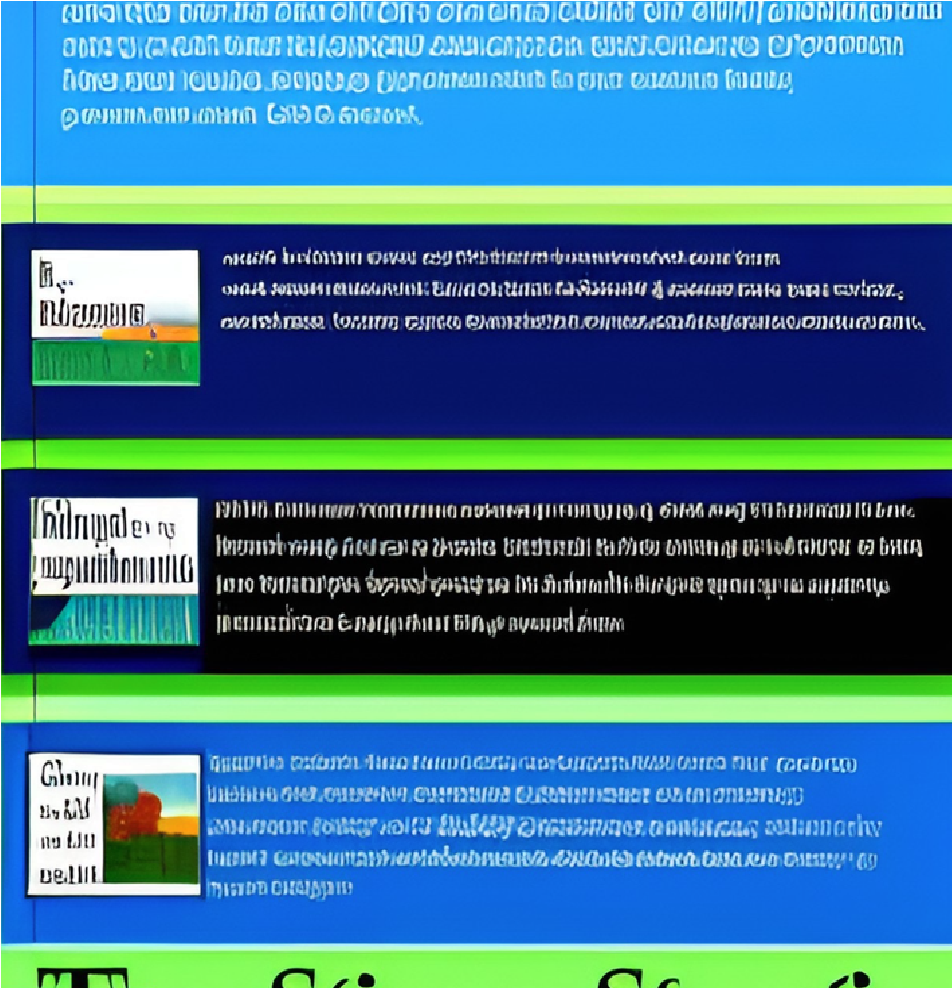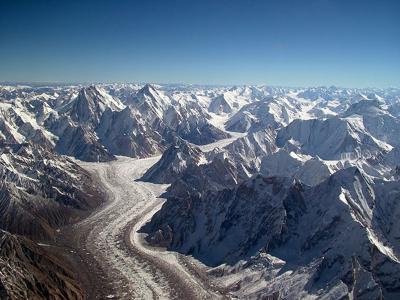- Air Homepage
- Global Warming
- Global Warming Articles
- Meteorology Articles
- Short Science Articles
Need some examples of short science articles?
Are you looking for some short science articles about meteorology? The American Meteorological Society's website is a great place to start. The site has a lot of articles written by experts in the field, and they're all free. Climate and weather articles cover a wide range of topics.
There are several reasons why you might love brief science articles. Firstly, they're quick and easy to read, so they're perfect for busy people like you who don't have time for long articles. Second, they simplify complicated scientific concepts into simple, understandable language, so anyone can understand them. Thirdly, these science articles can keep you up-to-date on the latest developments without having to read dense technical journals. Last but not least, they're a fun and interesting way to learn about the world around us and the amazing discoveries scientists have made.
For your information and entertainment, how about quality pieces on pollution, air quality and other atmospheric matters?
There are only archive issues available now, but you'd probably enjoy them anyway.
Get some ideas for elementary school or kindergarten lesson plans if you teach kids. Catch a glimpse of atmospheric research - you'll get physical science articles each month, for free. It's kind of like getting free research papers, but not quite as intense. Plus, you get a little bit of my humor.
Keep reading if you need ideas. There's also upper air analysis in these environmental articles. Maybe weather satellites, or even local or national weather radar.
Don't have time to wait for monthly issues? I have a few things for you right now, so keep reading. Check out this handy scientific glossary if you're interested in weather but don't know where to start.
You might be into climate change. We know what 97% of scientists think about it, and Friends of Science is a good place to find out what the other 3% say and why they matter.
Classic Articles
Friendly explanations that don't require a university degree to understand. This newsletter was called Blowin' in the Wind.
This environmental and earth-science newsletter will give you ideas to turbo boost your air research and plant some seeds for further research. You'd also get an update on the latest research and developments, and tips on how to get the most out of your project. Lastly, the newsletter gave readers a chance to share their own air research experiences.
Do you have papers to write? Want to write a current science article? Is there a convenient journal of environmental science or technology you're interested in?
Here are the backissues of Blowin' in the Wind here for free.
Other existing Short science articles
Here are some articles about weather and atmosphere:
RADAR - The latest scoop. The RADAR uses radio waves to detect and locate objects. Forecasters use it to predict weather patterns, like rain and snow.
More Weather RADAR – What would you see if you took one of these radar units apart? When you take apart a weather radar, you'll see a big dish that sends out radio waves, and a computer that collects and analyzes the waves that bounce back. Computers can then create weather patterns.
RADAR Weather Technical Descriptions – Find another use for microwave energy with RADAR weather. Weather detection isn't the only thing RADAR can do. Other industries can use it, like aviation and defense. Microwave energy is used in RADAR to detect objects.
National RADAR - Some of the issues we have. Weather forecasting relies on the National RADAR network. The network can sometimes have problems that affect the accuracy of weather predictions.
Doppler RADAR – What do all those pretty colors on the radar display mean? Doppler RADAR detects the speed and direction of moving objects, like storms and raindrops. Doppler RADAR displays different colors based on the intensity and speed of moving objects.
Satellites. – Where would you find satellites? Satellite weather from NOAA and GEOS. Satellites orbit the Earth and are used for lots of things, like communication and weather forecasting. Weather forecasting satellites include the National Oceanic and Atmospheric Administration (NOAA) and Geostationary Operational Environmental Satellite (GEOS).
Satellite Photo Resolution – Some history behind satellite photos - how quality and delivery have improved. Satellite photos have been around for a while, but the quality and delivery have improved. Satellite photos used to be grainy and hard to see, but now we can take high-quality photos and send them to people around the world quickly.
Satellite Wavelengths - Understand the basics of physics. Different wavelengths of light let satellites see different things on Earth. Satellites see different things on the ground by using different wavelengths, just like we see different colors.
Wavelengths and Satellite Pics – How weather satellites work. Satellites use special cameras to take pictures of the Earth. Different wavelengths of light can be detected with these cameras, which can help meteorologists see clouds, storms, and even temperature changes.
Multi-color Satellite photos – Advanced applications. Satellite photos can reveal a lot about the Earth's environment, like vegetation, ocean temperatures, and pollution. We can see the Earth's surface in more detail by using different wavelengths of light.
Surface Weather Analysis Maps – Learn what a meteorologist does with Surface Weather Analysis Maps. Surface weather analysis maps help meteorologists forecast future weather patterns and understand current weather conditions. Around the world, these maps show things like temperature, air pressure, and wind direction.
Isobars and Air Pressure Science – How atmospheric pressure affects your weather. Weather patterns are influenced by air pressure. On a map, isobars connect areas of equal air pressure. Meteorologists can predict how the weather will change by studying isobars.
Meteorology Terms and Physics Equations – Applied math for meteorology describes the Earth's atmosphere and weather. Meteorologists use physics equations to calculate things like temperature, air pressure, and wind speed. We can better understand our weather by applying math and physics concepts.
Upper Atmosphere Levels – Definitions of motion-related words in the upper atmosphere. There are different layers in the upper atmosphere with different temperatures and pressures. The layers are named based on how high they are above the Earth's surface, and they help us understand how air moves.
Jet Streams – We get "wind at your back, low to the left" from our study of Jet Streams. Jet streams are fast-moving air currents that move high in the atmosphere. They can make airplanes go faster, but they can also affect the weather on the ground. Pilots named jet streams when they noticed they could fly faster with the wind at their backs.
Atmosphere Layers – Why meteorologists care about the upper atmosphere. Gases surround the Earth in the atmosphere. The upper atmosphere plays a big role in weather patterns, so meteorologists pay attention to it. Storm formation and air mass movement can be affected by changes in the upper atmosphere.
Waves - What's the difference between a ridge and a trough? Atmosphere waves are patterns of movement. Ridges bring warm air to an area, while troughs bring cool air. Meteorologists can predict weather changes by understanding these patterns.
Upper Air Currents – How airflow compares to a highway. The upper air currents are like highways in the sky. They move air masses around the planet and can affect the weather everywhere. Meteorologists can predict where storms will form and how they'll move by tracking these currents.
Advection – Weather maps can be used for advection. Air moves horizontally in the atmosphere due to advection. We can use this for weather forecasting to see how air masses are moving and where they're going. Advection shows how air masses move over time on weather maps.
Deformation – The factors that cause unusual weather and sudden changes. Air masses can deform, causing unusual weather patterns and sudden changes in weather. When different air masses collide, or when air moves over a mountain range, it happens.
Vorticity – Understanding turbulence, eddies, and wind shear. Vorticity measures how much air is spinning in a given area. You can use this to understand turbulence, which is when the air becomes bumpy and causes planes to shake. Changes in vorticity also cause eddies and wind shear.
Dew Point – A cloud may have more (or less) dew point than you thought. Water vapor in the air condenses at the dew point. It's helpful for predicting when clouds will form and how much precipitation to expect.
Prevailing Winds – Find out what an omega block is. It's the wind that blows most often in a specific area. There are a lot of factors that can affect these winds, like the Earth's rotation and different types of air masses. A omega block is when a high pressure system is surrounded by two low pressure systems, causing unusual weather.
Weather Equipment – Here's a clever list of common weather instruments. Meteorologists collect data about the atmosphere with a variety of weather instruments. Thermometers measure temperature, barometers measure air pressure, and anemometers measure wind speed.
Barometers and Air Pressure – A millibar isn't where insects go drink after work. Air pressure is how much air presses down on Earth's surface. Barometers measure air pressure and can help predict weather changes. A millibar is a measurement of air pressure.
Temperature Conversions – Learn about different kinds of thermometers. Temperature can be measured with a mercury thermometer or a digital thermometer. Temperature is measured in Celsius and Fahrenheit.
Hygrometers – Humidity Meters – A hygrometer measures how much water vapor is in the air. Predicting when it's going to rain or snow is important based on how comfortable it feels outside.
Weather Vanes and Anemometers – Wind Speed Instruments. A weather vane shows the direction of the wind, while an anemometer measures its speed. They're great for predicting changes in the weather and understanding how different weather patterns move.
Rain Gauges – What falls from the sky and how much? Rain gauges measure how much rain has fallen in a given area. Floods can be predicted, droughts can be understood, and climate changes can be monitored.
Current Weather Observations – Decoding most official weather observations and aviation forecasts. Meteorologists collect data about the atmosphere using weather balloons, satellites, and radar. With this data, they can create official weather observations and aviation forecasts that help professionals plan our travel.
Global Warming – Here are a few basics about global warming. The long-term trend of rising temperatures on Earth is called global warming. Human activities, like burning fossil fuels and deforestation, release greenhouse gases into the atmosphere and trap heat. Sea levels can rise, extreme weather events can happen, and ecosystems can change because of global warming.
The problem with Global Warming – What happened in Kyoto. Known as global warming, the Earth's temperature is rising, which can lead to more extreme weather events like hurricanes, droughts, and heat waves. World leaders met in Kyoto, Japan and tried to slow global warming and reduce greenhouse gas emissions.
Effects of Global Warming – A few prophecies about global warming. Among the undesirable effects of global warming are rising sea levels, more extreme weather events, and changes to ecosystems. Scientists predict we'll see more wildfires, heat waves, and floods if we don't reduce greenhouse gas emissions.
Severe Weather – View the path of one of the worst tornadoes in modern history. One of the most destructive types of severe weather is tornadoes. One of the worst tornadoes in modern history hit Joplin, Missouri, in 2011, causing widespread damage and killing dozens. Be prepared for severe weather and follow instructions from local officials if one is coming.
Jobs Jobs Jobs – Job listings - I'll help you find Environmental consulting jobs. Environmental consulting helps businesses and governments protect the environment and comply with environmental regulations. Occupations in this field include environmental scientists, engineers, and consultants.
Environmental Professionals – Easy reference to environmental consulting services. Businesses can use environmental consulting services to comply with environmental regulations and develop sustainable practices. It can include things like reducing energy use, managing waste, and protecting wildlife habitats.
More Short Science Articles – View back issues of this newsletter for more short science articles. Here are the first 90 or so. You can learn a lot about science online, including newsletters and magazines that feature articles on a variety of topics. Check out back issues to learn about past discoveries.
Keyword for this page: short science articles
Now it’s YOUR turn: want me to make an article on something you say. Please provide me an idea right here...
What's the latest in Global Warming?
Not everything is covered on this website. It can't be. If you know something you're itching to tell the world, here's your chance. I'm all ears.
Go ahead.
A few previous facts...
Click below to see information from other visitors to this page...
global paper research warming 




HELLO MY NAME IS TIMOTHY AND I AM A COLLEGE STUDENT DOING A RESEARCH PAPER ON GLOBAL WARMING I WAS WONDERING IF YOU COULD ANSWER A FEW QUESTIONS AND IF …
Get a better understanding of our environment with these short science articles.
Take a look at these science articles. Learn about the weather and the atmosphere. There is no charge for this service!
Do you have concerns about air pollution in your area??
Perhaps modelling air pollution will provide the answers to your question.
That is what I do on a full-time basis. Find out if it is necessary for your project.
Have your Say...
on the StuffintheAir facebook page
Other topics listed in these guides:
The Stuff-in-the-Air Site Map
And,
Thank you to my research and writing assistants, ChatGPT and WordTune, as well as Wombo and others for the images.
GPT-4, OpenAI's large-scale language generation model (and others provided by Google and Meta), helped generate this text. As soon as draft language is generated, the author reviews, edits, and revises it to their own liking and is responsible for the content.






New! Comments
Do you like what you see here? Please let us know in the box below.